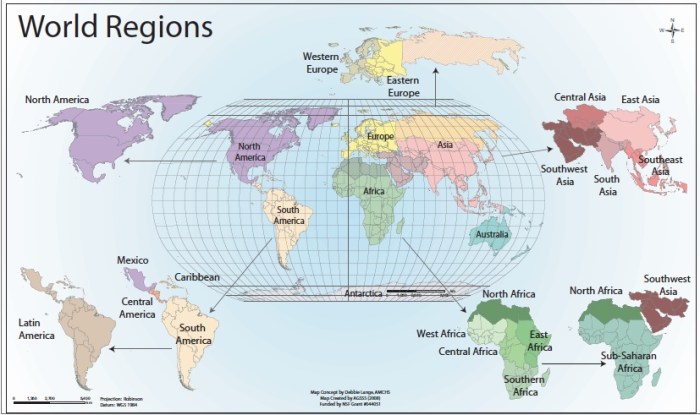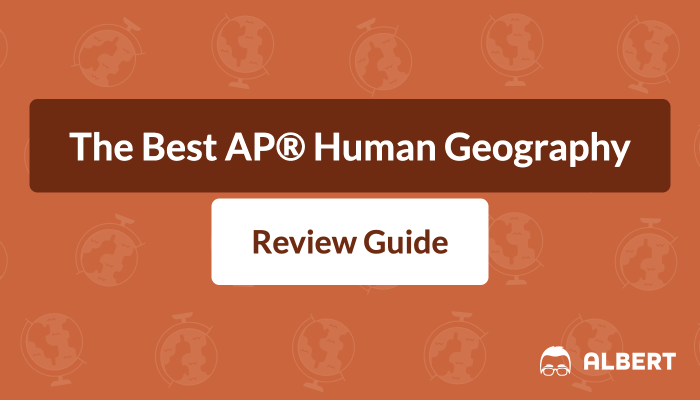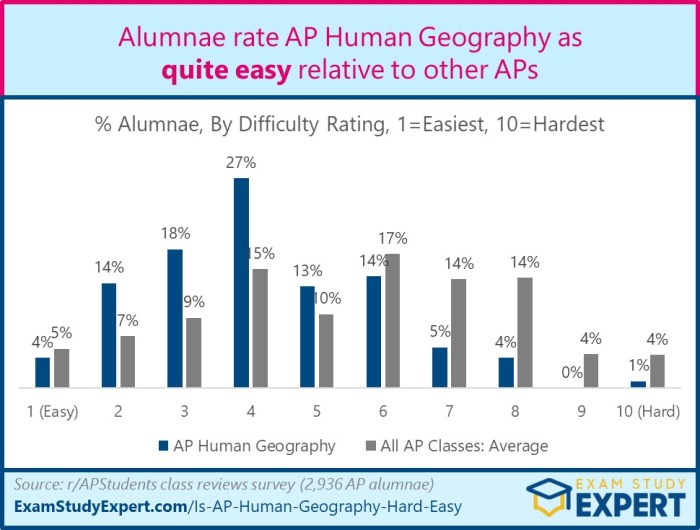Embark on a captivating journey through Unit 5 AP Human Geography FRQ, where we delve into the intricate tapestry of human societies, exploring their dynamics, challenges, and triumphs.
This unit unveils the fundamental concepts that shape our understanding of human populations, migrations, cultural identities, political landscapes, economic systems, urban environments, and the intricate relationship between humans and the environment.
Introduction

The AP Human Geography Free Response Question (FRQ) unit 5 holds significant importance in assessing students’ understanding of the complexities of human geography. It tests their ability to analyze, interpret, and communicate their knowledge about global patterns, processes, and interactions.
The FRQ unit 5 is structured into two parts, each worth 50% of the total score. Part A presents a data set or a scenario related to a specific geographical topic. Students are required to analyze the data, identify patterns, and draw inferences to support their arguments.
Part B consists of an essay question that asks students to discuss a broader geographical concept or issue, drawing upon their knowledge and understanding of the course material.
Part A: Data Analysis and Interpretation
Part A of the FRQ unit 5 requires students to demonstrate their ability to analyze and interpret geographical data. This includes identifying trends, patterns, and relationships within the data, as well as drawing inferences and making predictions based on the evidence presented.
Unit 5 of the AP Human Geography FRQ requires students to analyze and interpret data to understand spatial patterns. To enhance our understanding, let’s explore the real Connie Volkos today . By examining real-world examples, we can gain insights into the complex interactions between humans and their environments.
This knowledge will help us tackle the FRQ’s challenges effectively.
- Students must be familiar with different types of geographical data, including maps, graphs, tables, and statistics.
- They should be able to identify the purpose of the data and the variables being represented.
- Students must be able to apply their knowledge of geographical concepts and theories to analyze the data and draw meaningful conclusions.
Part B: Essay Question
Part B of the FRQ unit 5 requires students to demonstrate their understanding of a broader geographical concept or issue. This includes the ability to synthesize information from multiple sources, develop a coherent argument, and communicate their ideas effectively.
- Students must be able to identify the main points of the essay question and organize their response accordingly.
- They should be able to support their arguments with evidence from the course material, as well as from their own knowledge and experience.
- Students must be able to write clearly and concisely, using appropriate geographical terminology.
Population and Migration

Population and migration are fundamental aspects of human geography, shaping the distribution and characteristics of populations across the globe. This unit explores key concepts related to population and migration, examining their influence on the development of different regions and the causes and consequences of these demographic shifts.
Population Density and Distribution
Population density refers to the number of people inhabiting a particular area, while population distribution describes the spatial arrangement of these populations. These factors vary significantly across regions, influenced by factors such as climate, resource availability, and economic opportunities.
Population Growth Rates
Population growth rates measure the rate at which a population increases or decreases over time. These rates are influenced by factors such as birth rates, death rates, and migration patterns. Understanding population growth rates is crucial for planning and managing resources, infrastructure, and social services.
Migration Patterns
Migration refers to the movement of people from one place to another. Migration patterns can be internal (within a country) or international (between countries). Migration is driven by a complex interplay of factors, including economic opportunities, political instability, environmental disasters, and family reunification.
Causes and Consequences of Migration
The causes of migration are multifaceted, ranging from economic disparities to environmental challenges. Migration can have significant consequences for both the sending and receiving regions, affecting labor markets, cultural diversity, and social cohesion.
Cultural Patterns and Processes
Culture, a multifaceted and dynamic phenomenon, shapes the identities of individuals and communities. It encompasses a wide range of elements, including language, religion, customs, values, and beliefs, that influence our thoughts, behaviors, and interactions with the world.
Cultural diffusion, assimilation, and acculturation are processes that contribute to the spread, change, and adaptation of cultural patterns. Diffusion involves the transmission of cultural traits from one society to another through various means, such as trade, travel, or colonization. Assimilation occurs when individuals from different cultural backgrounds adopt the dominant culture of the society they live in, while acculturation involves a two-way process of cultural exchange and adaptation, where both the incoming and receiving cultures influence each other.
Language
Language, a vital aspect of culture, serves as a medium of communication, thought, and expression. It reflects the values, beliefs, and experiences of a particular group of people. Language diversity plays a crucial role in maintaining cultural identity and fostering a sense of belonging.
However, globalization and the spread of dominant languages can lead to language loss and endangerment.
Religion
Religion, a system of beliefs and practices, provides individuals with a sense of purpose, meaning, and belonging. It shapes moral values, social norms, and cultural practices. Religious diversity contributes to the richness and complexity of societies, but it can also lead to conflict and discrimination.
Customs
Customs, the traditional and habitual practices of a society, regulate social behavior and provide a sense of order and predictability. They can include rituals, festivals, dress codes, and dietary practices. Customs vary widely across cultures, reflecting the unique experiences and adaptations of different groups of people.
Political Geography: Unit 5 Ap Human Geography Frq
Political geography explores the relationship between politics and space. It examines how political power is organized and distributed across territories, and how it shapes the physical and human landscapes. Key concepts in political geography include sovereignty, territory, and boundaries.
Sovereignty, Unit 5 ap human geography frq
Sovereignty refers to the supreme authority of a state over its territory and population. It includes the power to make and enforce laws, control borders, and conduct foreign relations.
Territory
Territory is the physical space over which a state exercises sovereignty. It can include land, water, and airspace. Territories can be acquired through conquest, purchase, or treaty.
Boundaries
Boundaries are the lines that separate one state’s territory from another. They can be natural (e.g., rivers, mountains) or artificial (e.g., lines of latitude or longitude). Boundaries can be disputed, leading to conflicts between states.
Economic Geography

Economic geography examines the spatial distribution of economic activities and the factors influencing their location. These activities encompass primary, secondary, and tertiary industries, each with its unique characteristics and global distribution patterns.
Types of Economic Activities
Primary Activities:These involve the extraction of raw materials from the earth, such as agriculture, mining, forestry, and fishing. They are often concentrated in areas with abundant natural resources. Secondary Activities:These involve the transformation of raw materials into finished goods, such as manufacturing, construction, and utilities.
They tend to cluster in urban areas with access to labor, infrastructure, and markets. Tertiary Activities:These provide services rather than goods, such as retail, tourism, healthcare, and education. They are typically found in developed regions with high levels of urbanization and disposable income.
Urban Geography

Urban geography is the study of cities and urban areas. It examines the spatial distribution, patterns, and processes that shape urban environments. Key concepts in urban geography include urbanization, city size, and urban morphology.
Urbanization refers to the increasing proportion of a population living in urban areas. City size refers to the number of people living in a city. Urban morphology refers to the physical structure and form of a city, including its buildings, streets, and land use patterns.
Types of Urban Environments
There are different types of urban environments, each with its own unique characteristics. Some common types of urban environments include:
- Central business districtsare the commercial and financial centers of cities. They are typically characterized by high-rise buildings, busy streets, and a mix of businesses.
- Residential areasare where people live. They can be characterized by single-family homes, apartments, or townhouses.
- Industrial areasare where goods are produced. They are typically characterized by factories, warehouses, and other industrial buildings.
- Recreational areasare where people go to relax and have fun. They can include parks, beaches, and sports fields.
Challenges and Opportunities of Urbanization
Urbanization presents both challenges and opportunities. Some of the challenges of urbanization include:
- Overcrowding: As more people move to cities, they can become overcrowded, leading to problems such as traffic congestion, pollution, and a lack of affordable housing.
- Pollution: Cities are often major sources of pollution, including air pollution, water pollution, and noise pollution.
- Crime: Crime rates are often higher in cities than in rural areas.
Some of the opportunities of urbanization include:
- Economic growth: Cities are often centers of economic growth, providing jobs and opportunities for businesses.
- Cultural diversity: Cities are often home to people from all over the world, creating a rich and diverse cultural environment.
- Access to services: Cities offer a wide range of services, including healthcare, education, and entertainment.
Environmental Geography
Environmental geography examines the intricate relationships between humans and their surroundings. It encompasses the study of various environmental components, human impacts on these components, and the significance of environmental sustainability.
Elements of the Environment
The environment comprises three primary elements:
- Atmosphere:The gaseous envelope surrounding the Earth, composed of nitrogen, oxygen, and other gases.
- Hydrosphere:The Earth’s water bodies, including oceans, lakes, rivers, and groundwater.
- Biosphere:The portion of the Earth where life exists, encompassing all living organisms and their interactions.
Human Impact on the Environment
Human activities have significantly impacted the environment:
- Pollution:The release of harmful substances into the air, water, and land.
- Climate Change:The long-term alteration of temperature and weather patterns due to increased greenhouse gas emissions.
- Deforestation:The clearing of forests, leading to habitat loss, biodiversity decline, and carbon dioxide emissions.
Importance of Environmental Sustainability
Environmental sustainability is crucial for the well-being of both humans and the planet. It involves balancing economic development with the preservation of natural resources and ecosystems.
Achieving environmental sustainability presents challenges:
- Population Growth:Increasing population puts strain on resources and exacerbates environmental degradation.
- Economic Inequality:Poverty and lack of access to resources can lead to environmental exploitation.
- Technological Advancements:While technology can contribute to environmental solutions, it can also create new challenges.
Geographic Information Systems (GIS)
Geographic Information Systems (GIS) are powerful tools that allow us to collect, store, analyze, and visualize geographic data. They are used in a wide variety of fields, including land use planning, environmental management, and disaster response.
GIS data can be divided into two main types: vector data and raster data. Vector data consists of points, lines, and polygons, which can be used to represent features such as roads, rivers, and buildings. Raster data consists of a grid of cells, each of which contains a value that represents a particular attribute, such as elevation or land use.
GIS can be used to create a variety of maps and other visualizations. These visualizations can help us to understand the spatial relationships between different features and to identify patterns and trends. GIS can also be used to perform analysis, such as finding the shortest route between two points or calculating the area of a particular polygon.
GIS is an essential tool for solving real-world problems. It can be used to help us to make better decisions about land use, protect the environment, and respond to disasters.
Questions and Answers
What is the significance of the AP Human Geography FRQ Unit 5?
Unit 5 provides a comprehensive examination of the key concepts and themes in human geography, preparing students for the Free Response Question (FRQ) portion of the AP exam.
What are the main topics covered in Unit 5?
Unit 5 encompasses population and migration, cultural patterns and processes, political geography, economic geography, urban geography, environmental geography, and geographic information systems (GIS).
How can I prepare for the AP Human Geography FRQ?
Thoroughly study the course material, practice answering FRQ prompts, and seek guidance from your teacher or a tutor.